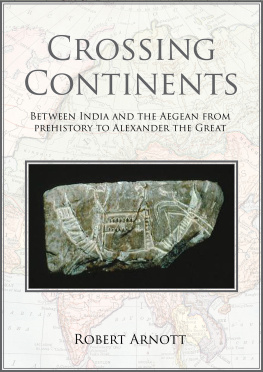GEOGRAPHY AND INHABITANTS OF MACEDONIA
THE HISTORY OF A nation is by no means to be regarded solely as a consequence of the natural condition of its local habitations. So writes one of the latest of Greek historians in the midst of a graphic description of the climate and physical characteristics of the shores of the Aegean. But the stress which he lays on these characteristics, and the inferences which he draws from them, show that he considers them to have been a strongly determining cause of the history of the peoples who dwelt upon those shores. It is indeed impossible to suppose that, had the Greeks been inhabitants of a level inland country, they would have remained so long disunited, or would have shown (as they did) the restless activity characteristic of the seaman; and we shall have evidence in the following pages of the extraordinary endurance of Greeks amid sudden changes of climate, as well as of their superiority to Asiatics in bodily not less than mental vigour. That some part of this vigour was owing to the country in which they lived will hardly be denied.
In its physical characteristics Greece was a land of singular contrasts. A remarkable similarity of conditions between the eastern and western shores of the Aegean was matched by a remarkable difference of conditions between the eastern and western coasts of Greece itself, and still more between its southern and northern provinces. The Aegean was a highway between two halves of one countrya sea exceptionally suitable for commerce. The air is clear. Islandsthat is, landmarksare frequent. Bays and safe anchorages are innumerable. During a great part of the summer there are regular winds which blow daily from the north, so regularly indeed that Demosthenes counted it among Philips advantages that he lived at the back of the north wind. On the other hand, while the eastern side of Greece is rich in fertile lowlands and has a deeply indented though accessible coastline, the western side consists of little but rocky ridges skirting a savage shore with few harbors. But the contrast between south and north is yet more striking than this. There is not on the entire surface of the globe, it has been said, any other region in which the different zones of climate and flora meet one another in so rapid a succession. The semi-tropical products of the Cyclades and the Peloponnesus have vanished in Boeotia. The olives of Attica are not seen in Thessaly. Even the myrtle disappears on the northern shores of the Aegean.
If we go farther north, we only heighten the contrast; for the climate and products of Macedon resemble those of central Germany. It is a land of broad rivers and great plains, far superior to Illyria across the mountains in fertility, and boasting a seacoast of great extent. Yet seacoast and inland were strangely cut off the one from the other, so that the inhabitants of the interior until Philips time were to a great extent a highland population secluded from the world. The reason of this lay in the peculiar conformation of the mountain system of the country. If we were to use the language of a cultivated Athenian, we should say that the range of the Kambounian (Cambunian) mountains, stretching from the lofty mass of Olympos in the east to Lakmon in the west, formed a natural barrier between Hellenes and Barbarians, between pure-breeds and half-breeds. This range was indeed of no great height, yet it formed, roughly speaking, a sort of division between one kind of country and another, one kind of people and another. The Hellenes to the south reached a high degree of civilization, and emigrating from home and mingling with their neighbors in all directions, powerfully affected the history of surrounding nations. The Macedonians remained for a long while a half-barbarous people, because they were shut off not only from the outside world, but from mutual intercourse by lofty and numerous mountain chains. These mountains, in fact, were so lofty and difficult, that at most points they were higher than the Kambounian range, at many points even higher than Pindos itself. It was easier on the whole to pass from the adjacent lowlands into Thessaly or the valley of the Istros (Danube) than from one Macedonian valley to another. On the other hand, the rivers that rise in these mountain ranges gradually converge before falling into the sea after long and devious wanderings. The first outward expansion of these highland tribes would needs follow the natural line marked out for them by their rivers flowing seaward, and their first natural meeting-points would be Aigai (Egae) and Pella in the valley of the Axios, the successive capitals of Macedonian kings.
In the widest extent of the name, Macedon included five tracts or provinces, singularly different from one another. Three of these were basins of large rivers, while a fourth (Emathia) was almost as directly a gift of the united rivers as Egypt was of the Nile, being formed, it would seem, out of the alluvial deposit brought down by them in the course of centuries from the lofty mountains of the interior.
The valley watered by the Haliakmon was a narrow district, enclosed between the Kambounian and Skardos ranges on the south and west, and Mounts Barnos and Bermios on the north and east. Although it was not remarkable for fertility, the possession of this valley was yet a matter of importance to the kings of Macedon. At its northern end there was a remarkable gorge, cleaving the mountains from east to west, the only rent in the great mass of Skardos for more than 200 miles, through which a tributary of the Apsos flows from its source in Mount Barnos on its way to the Adriatic. The Roman road of later days (Via Egnatia) was carried over a pass some thirty miles to the north; but before the Roman conquest of Macedon, this gorge of the Eordaikos must have formed the main line of communication between Illyria and Macedon, whether for commerce or invasion, and lent therefore an exceptional importance to the upper valley of the Haliakmon.
To the north of Orestis lay the fertile uplands, watered by the river Erigon, as it pursues a winding course to join the Axios. Though averaging a height of 1,5oo feet above the sea, the district boasted a fat rich soil capable of maintaining a large population.
The Axios was the chief river in Macedon, and its eastern boundary prior to the reign of Philip, a river too of a different character to the preceding. In its upper course it flows through a narrow cultivated plain, receiving the waters of the Erigon from Pelagonia. Presently it abruptly changes its peaceful nature, forming at the so-called Iron Gates rapids for some considerable distance, where its waters begin to slide to the lowlands of Emathia. At the Gates the river cuts through the mountain range which joins Skardos to Orbelos, and having cleft for itself a passage through a precipitous gorge of more than 600 feet in height, gradually descends to the lower level, and so falls at last into the sea, close to the joint mouths of the Haliakmon and Lydias.













